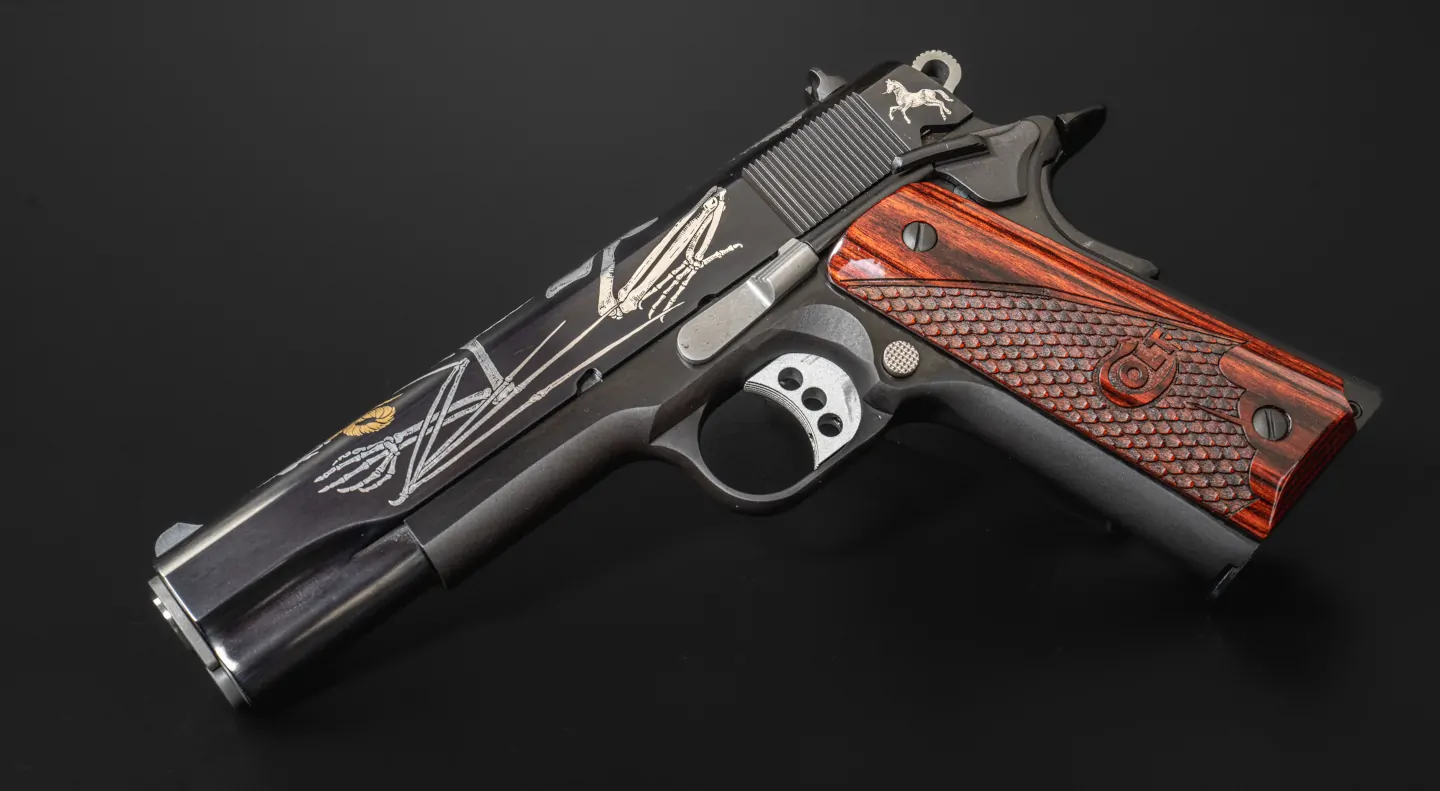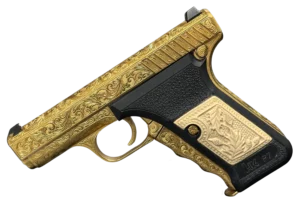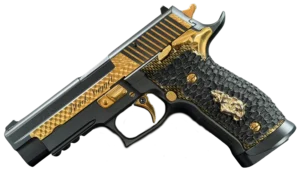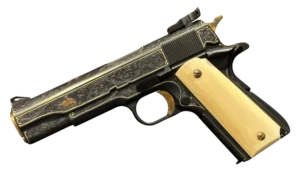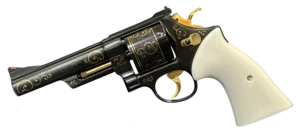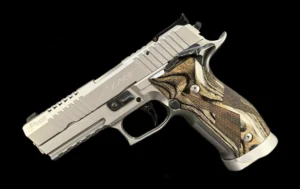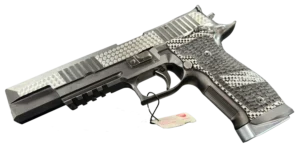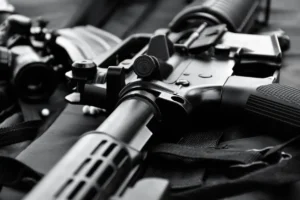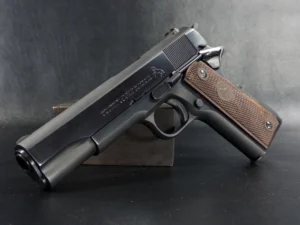Key Takeaways:
- The 1911 isn’t just a gun—it’s a design that never needed fixing: John Browning’s original blueprint was so spot-on that over a century later, the core mechanics are still in play. Sure, materials have improved and customizations abound, but the foundation remains untouched. It’s proof that great ideas don’t age—they endure.
- From muddy trenches to shiny trophies, the 1911 has seen it all: Whether on the front lines of global conflict or the podiums of shooting competitions, the 1911 has proven itself time and time again. Its versatility—combat-tough yet target-precise—is what keeps it relevant across wildly different worlds.
- More than a firearm, the 1911 is a cultural symbol: It’s shown up in war films, noir novels, and real-life hero stories. Owning one isn’t just about ballistics—it’s about belonging to a legacy. The 1911 resonates because it carries a story in every curve of steel and every pull of the trigger.
There are guns—and then there’s the 1911.
It’s more than a slab of steel with a trigger. The 1911 is a living piece of history, a design so good it hasn’t just aged well—it’s barely aged at all. From dusty trenches in WWI to custom holsters on competitive shooters today, this pistol has been around the block, stayed relevant, and earned its stripes more times than we can count.
Conceived by the legendary John Browning, the 1911 didn’t just meet a military requirement—it set a standard. And over a hundred years later, it’s still doing the job. Let’s walk through the story of the 1911—where it came from, why it mattered, and how it’s still turning heads today.
From Sketchpad to Sidearm: Where It All Began
So, picture the early 1900s. The U.S. military wanted a semi-auto that could deliver real stopping power—something dependable, rugged, and simple to operate under pressure. Enter John Browning, who looked at the future and started drawing.
His solution? A recoil-operated, single-action semi-automatic pistol chambered in .45 ACP. The result was unlike anything the world had seen. The year was 1911, and America officially adopted Browning’s brainchild as its military sidearm.
And honestly, not much has changed since.
Sure, manufacturers have added their own spins—better sights, lighter materials, tighter tolerances. But the bones? Those are still pure Browning. The grip angle, the thumb safety, the short-recoil operation—it’s all still there.
That kind of staying power doesn’t just happen. It means the original design got something fundamentally right.
Into the Fire: A Warrior’s Weapon
The 1911 didn’t just ride along for the fun—it went to war. Real war.
World War I. World War II. Korea. Vietnam. Wherever American boots hit the ground, there was a decent chance a 1911 was in the holster. And in a world of mud, sand, cold, and chaos, it just kept working.
You’d hear the stories—soldiers in the trenches praising its ruggedness, Marines clearing islands in the Pacific swearing by its stopping power. That .45 ACP round wasn’t subtle, but it did the job when lives were on the line. And the gun? Easy to clean, easy to trust.
Even after the U.S. military moved to the Beretta M9 in the 1980s, elite units held on. They knew what they had. And many still carry custom 1911s today.
It’s like an old warhorse that never really left the stable—it just got some new shoes and kept charging forward.
From Battlefield to Bullseye
Here’s the thing: the 1911 doesn’t just perform under fire—it performs under pressure. And in the world of competitive shooting, that matters just as much.
Ever seen a finely tuned 1911 in a USPSA match? It’s like watching ballet with brass flying everywhere. The 1911 platform is naturally accurate, thanks to its fixed barrel design and consistent trigger pull. But with a little love—match-grade barrels, hand-fit slides, tuned triggers—it becomes a surgical instrument.
That’s why it’s dominated bullseye competitions for decades. And even in speed shooting, where every hundredth of a second counts, shooters often still choose the 1911 or its modern double-stack cousin, the 2011.
It’s kind of ironic. The same gun that won wars is now winning trophies.
Not Just a Gun—A Cultural Touchstone
Okay, let’s step away from the range for a second. Because the 1911 isn’t just a piece of gear—it’s a piece of American identity.
Seriously. How many movies, books, and video games have featured a 1911? Whether it’s clutched by a detective in a noir thriller or carried by a modern-day hero, this pistol has a presence. It’s iconic. Instantly recognizable.
Collectors chase rare models like holy grails. Gun enthusiasts speak about them with reverence. Even people who’ve never shot one know what it is. It has this aura that transcends its mechanical function. You don’t just own a 1911—you join a tradition.
And that tradition is as much about craftsmanship as it is about firepower.
Still Going Strong—Why the 1911 Still Matters
Now, you might wonder—why hasn’t it faded out? Why are people still buying, carrying, and shooting a gun designed in the horse-and-buggy era?
Simple: because it still works. And not just functionally—it works as a design.
Modern 1911s are built with better metals, tighter tolerances, and new coatings that resist wear and corrosion. Some even come with optics cuts for red dots. But all of them still feel like a 1911. The grip angle, the smooth break of the trigger, the confidence it inspires—they’re still there.
And let’s not forget: it’s not just nostalgia that fuels the 1911’s popularity. For concealed carry, competition, and even home defense, it still holds its own.
Plus, the 1911 community is alive and well. There are forums, clubs, custom shops, and entire industries dedicated to this one platform. It’s a living legacy—constantly evolving while staying rooted in the past.
A Legacy That Won’t Quit
If you’ve made it this far, you probably get it by now: the 1911 isn’t going anywhere.
It’s survived world wars, technological revolutions, and shifting tastes. It’s gone from government contract to collector centerpiece, from standard issue to fully customized marvel. And through all of it, it’s stayed true to its purpose: to be the sidearm you can count on.
Whether it’s tucked in a soldier’s hip, sitting in a glass case, or ringing steel on a Sunday afternoon, the 1911 continues to do what it’s always done—deliver.
And maybe that’s the secret. In a world that’s constantly chasing the next big thing, the 1911 reminds us that sometimes, the best ideas are the ones that don’t need to change.
Because it just works—plain and simple. The 1911 combines elegant design with practical performance. Even after a century, it offers a rock-solid single-action trigger, natural grip angle, and accuracy that rivals newer models. Additionally, modern 1911s often feature upgraded materials, optics-ready slides, and custom finishes, while still retaining the classic 1911 feel. It’s like wearing a classic leather jacket—timeless, functional, and always in style.
No hype—just history. The 1911 saw active service in World War I, World War II, the Korean War, the Vietnam War, and beyond. U.S. troops carried it into battle for decades, and it earned a reputation for rugged reliability. Even after its official retirement, it never really left. Elite units, law enforcement, and seasoned shooters have kept it in service because they trust it to perform when it matters most.
That depends on what you’re looking for. The 1911 has a loyal following because of its trigger, accuracy, and overall shootability. But it’s not necessarily “plug and play” for everyone. It’s single-action only, has a manual thumb safety and grip safety, and it’s heavier than many modern polymer pistols. If you’re willing to learn it and maintain it properly, it’s an advantageous platform, even for beginners.
It shines. The 1911’s precision and predictable trigger make it a natural in bullseye and action shooting sports. Many competitive shooters swear by tuned 1911s or the double-stack 2011 variants for events like USPSA or IDPA. It’s a platform that can be built for speed, accuracy, and control—basically, it’s a blank canvas for perfectionists with a passion for shooting.
Maybe—but there’s something to it. The 1911 isn’t just another polymer gun off an assembly line. Each one carries a sense of history, craftsmanship, and tradition. People build, tune, customize, and collect them not just because they work, but because they mean something. Like vintage watches or classic cars, the 1911 invites a kind of personal connection you don’t often get with modern utilitarian gear.


